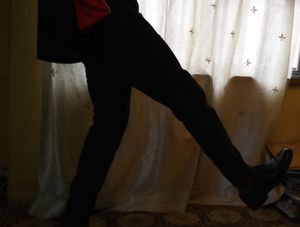Active and Passive Insufficiency: Difference between revisions
No edit summary |
No edit summary |
||
| Line 5: | Line 5: | ||
</div> | </div> | ||
== Introduction == | == Introduction == | ||
The ability of a muscle to exert force diminishes as the muscle shortens. The phenomenon is known as muscle insufficiency. Muscle insufficiency is a condition in which a muscle is unable to exert its normal force and bring about movement of the part to which it is attached.<ref>2. muscular insufficiency [Internet]. TheFreeDictionary.com. 2020 [cited 17 September 2020]. Available from: <nowiki>https://medical-dictionary.thefreedictionary.com/muscular+insufficiency</nowiki></ref> Muscle insufficiency can either be passive or active. | |||
== | == Active Insufficiency == | ||
When a muscle becomes shortened to the point that it cannot generate or maintain active tension, active insufficiency is reached. Active insufficiency occurs when a multi-joint muscle shortens over both joints simultaneously, hence, creates so much slack, that muscle tension is almost completely lost<ref>1. Rogers M, Rogers M. Understanding Active and Passive Insufficiency [Internet]. National Federation of Professional Trainers. 2020 [cited 17 September 2020]. Available from: https://www.nfpt.com/blog/understanding-active-and-passive-insufficiency</ref>. | |||
The rectus femoris can actively flex the hip individually through its full range of motion or extend the knee individually through its range of motion. | |||
[[File:Hip flexion 1.jpg|center|thumb]] | |||
On the other hand, the hip cannot be actively flexed and the knee extended simultaneously through their full range of motion because the rectus femoris, which crosses both joints, has shortened to a degree that it becomes unable to generate a maximum muscle contraction. | |||
[[File:Active insufficiency.jpg|center|thumb]] | |||
== Sub Heading 3 == | == Sub Heading 3 == | ||
Revision as of 16:42, 17 September 2020
Original Editor - User Name
Top Contributors - Innocent Abugu, Lucinda hampton, Kim Jackson and Alicia Fernandes
Introduction[edit | edit source]
The ability of a muscle to exert force diminishes as the muscle shortens. The phenomenon is known as muscle insufficiency. Muscle insufficiency is a condition in which a muscle is unable to exert its normal force and bring about movement of the part to which it is attached.[1] Muscle insufficiency can either be passive or active.
Active Insufficiency[edit | edit source]
When a muscle becomes shortened to the point that it cannot generate or maintain active tension, active insufficiency is reached. Active insufficiency occurs when a multi-joint muscle shortens over both joints simultaneously, hence, creates so much slack, that muscle tension is almost completely lost[2].
The rectus femoris can actively flex the hip individually through its full range of motion or extend the knee individually through its range of motion.
On the other hand, the hip cannot be actively flexed and the knee extended simultaneously through their full range of motion because the rectus femoris, which crosses both joints, has shortened to a degree that it becomes unable to generate a maximum muscle contraction.
Sub Heading 3[edit | edit source]
Resources[edit | edit source]
- bulleted list
- x
or
- numbered list
- x
References[edit | edit source]
- ↑ 2. muscular insufficiency [Internet]. TheFreeDictionary.com. 2020 [cited 17 September 2020]. Available from: https://medical-dictionary.thefreedictionary.com/muscular+insufficiency
- ↑ 1. Rogers M, Rogers M. Understanding Active and Passive Insufficiency [Internet]. National Federation of Professional Trainers. 2020 [cited 17 September 2020]. Available from: https://www.nfpt.com/blog/understanding-active-and-passive-insufficiency








